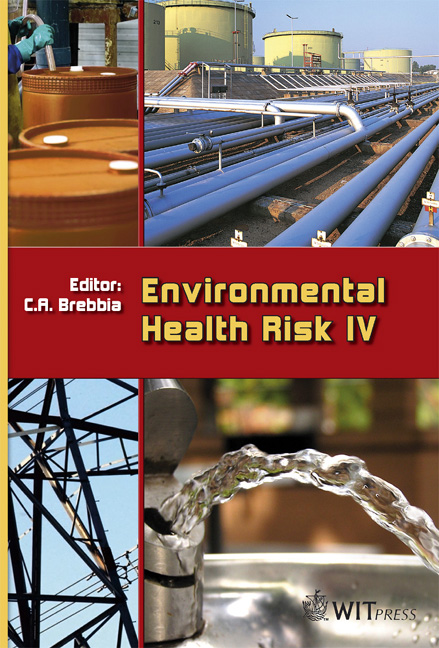Relation Between Ambient Air And Breath Volatile Organic Compounds
Price
Free (open access)
Transaction
Volume
11
Pages
8
Published
2007
Size
360 kb
Paper DOI
10.2495/EHR070041
Copyright
WIT Press
Author(s)
H. Dhondt, E. Goelen, G. Koppen & L. Verschaeve
Abstract
Breath analysis is a non-invasive tool that can be used to measure body impact following exposure to air pollutants. A method for collecting and analyzing exhaled breath was developed and used to compare individual exhaled breath volatile organic compounds (VOCs) with ambient air VOCs. Exhaled breath was collected in Teflon bags and analyzed using thermal desorption gas chromatography – mass spectrometry. The repeatability of this method was examined following analysis of 10 breath samples of each of three subjects. An environmental health study including 56 3-year-old children in Flanders examined abundances of VOCs in exhaled breath in relation to the presence of these VOCs in ambient air. It was demonstrated that a number of VOCs were either significantly retained or cleared by the body. Keywords: exhaled breath, volatile organic compounds, ambient air. 1 Introduction Monitoring the influence of environmental pollution on human health has increased remarkably during the past decades. So far, methods to evaluate exposure to or impact of these environmental pollutants mainly involved the collection and analysis of biological media such as blood or urine. Measuring biomarkers in breath, however, is a very attractive approach to monitoring environmental impact because it is non-invasive and makes repeated sampling possible [1]. Breath contains valuable information because the pulmonary alveolar membrane consists of a thin barrier separating the air in the alveoli of the lung from the blood in the capillaries.
Keywords
exhaled breath, volatile organic compounds, ambient air.





